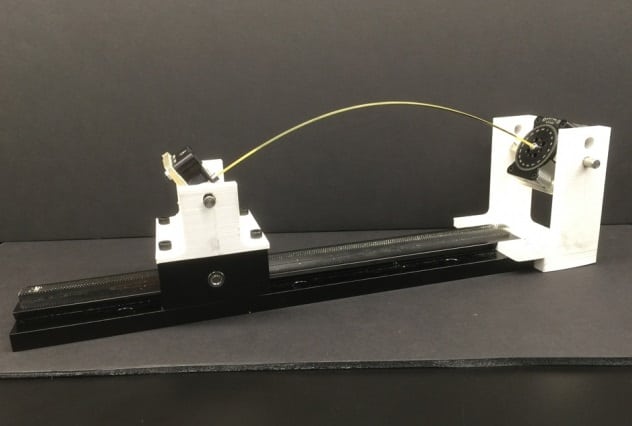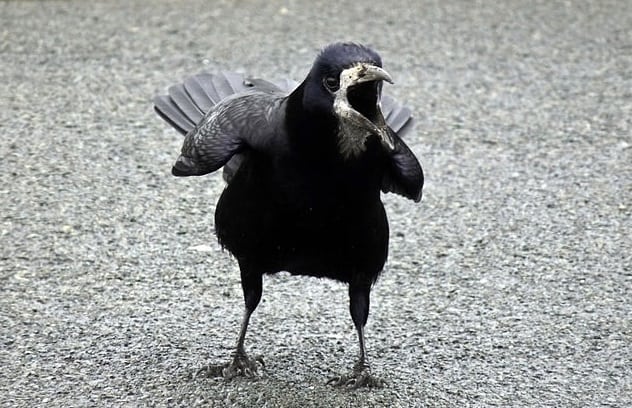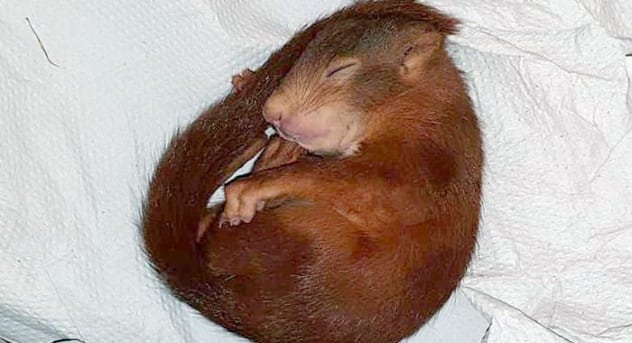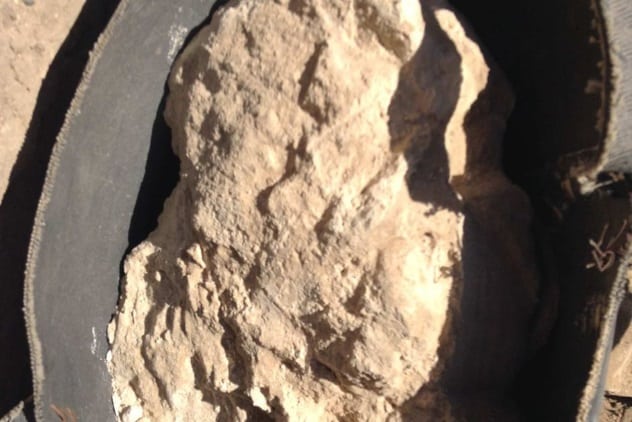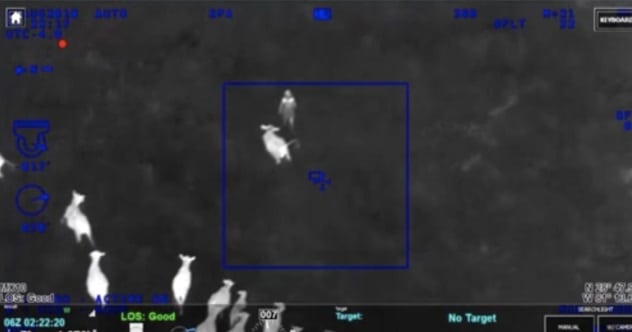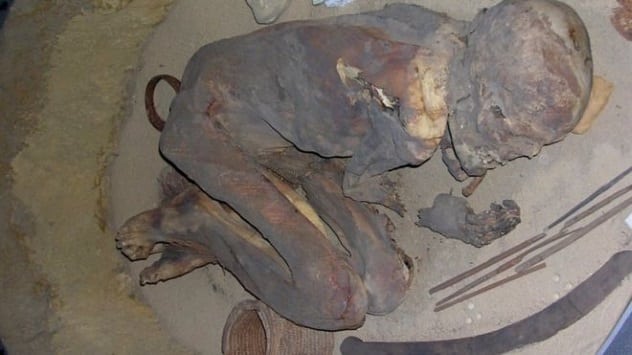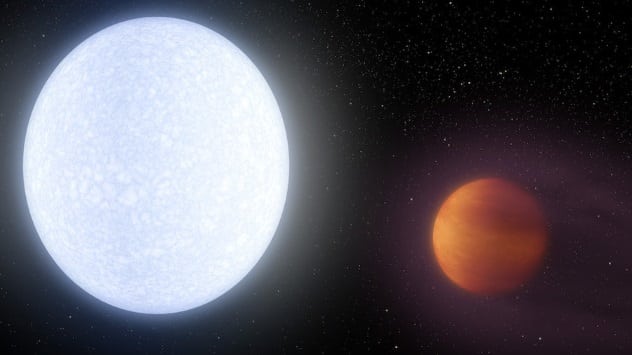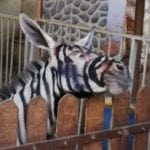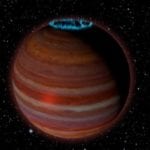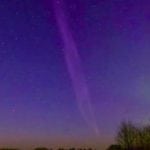Animals were pretty active this week, and we look at some clever birds, a herd of crime-fighting cows, and one vicious squirrel. Scientists were busy unraveling the mysteries of cheese and spaghetti, and we also examine a really weird planet where titanium exists in vapor form.
10 Sharp Scientists Solve Sneaky Spaghetti Stumper
Researchers at MIT cracked a decades-old mystery by finally finding a way to break a spaghetti stick in two. This is a challenge which, over the years, has flummoxed both physicists and laymen. Even Richard Feynman explored the phenomenon in 1939 and failed to find an adequate explanation for it. And the best part is that anyone can try it at home. Just take a single spaghetti stick, hold it at both ends, and start bending it. The challenge is to break it in two halves. While this can happen from time to time, the vast majority of sticks will break into three or more pieces. It wasn’t until 2005 that a group of physicists from France developed a new theory to describe the forces at work when bending a long, thin rod like a spaghetti stick. They said that the initial break happens in the center, where the curvature is the greatest, and it causes a “snap-back” effect which creates further fracture to the rod. They won the 2006 Ig Nobel Prize for this but were unable to devise a way of nullifying the effect. A new MIT study had the answer. The secret is to twist the spaghetti. Researchers built a machine specifically for this task to ensure uniformity. They found that the stick must first be twisted to a critical degree and then bent slowly, and it will break in two.[1]
9 Rooks In The Workplace
A theme park in France has put rooks to work by teaching the birds to collect and deposit trash. Rooks, as well as other members of the Corvidae family, have frequently been hailed as some of the smartest animals on the planet. The people at Puy du Fou theme park in Les Epesses found a practical and useful application for that intelligence. The corvids have been trained to pick up cigarette butts and other small pieces of garbage. Afterward, they deliver their cargo to specially designed bins which dispense nuggets of bird food as reward for their diligent work.[2] Six feathery cleaners were deployed during the successful trial run, and more have been put to work this week. It remains to be seen if the technique catches on in other places.
8 Naked Protest Against Pesky Tourists
More and more Europeans living in touristy cities are protesting against cruise ships that bring tens of thousands of passengers at once, claiming they are causing environmental and cultural damage and pricing locals out of their homes. One Norwegian politician decided to mount his own protest and greeted thousands of passengers aboard one cruise ship in the nude. Svein Ingvald Opdal is a 71-year-old member of Norway’s Green Party who was vacationing with his wife in the village of Olden. He became annoyed after seeing three cruise liners bring 11,000 passengers in just one day to a small community with a population of 500. He decided to give the next ship a memorable welcome, stripped down, and flashed the incoming tourists.[3] Opdal described the protest as a “spontaneous act that [he] did mostly for fun.” His wife took a photograph but was too embarrassed to post it online. Instead, the septuagenarian shared it with his 460 Instagram followers. The stunt proved popular enough to gain traction and make worldwide news.
7 New Horizons Detects Hydrogen Wall
NASA scientists announced that the New Horizons spacecraft has reached a barrier they describe as a “hydrogen wall.” The phenomenon was detected by the onboard instrument “Alice,” an ultraviolet imaging telescope and spectrometer used to gather information about Pluto’s atmosphere. As New Horizons is heading toward the boundaries of the solar system, Alice has discerned a source of ultraviolet light in the distance.[4] Scientists believe the light is being scattered by a wall of hydrogen, which includes “substantial contribution from a distant source” along with hydrogen atoms from our system. If this turns out to be the case, then the hydrogen wall could have been formed at the point where our solar wind encounters interstellar winds. The New Horizons team plans on studying the region with Alice about twice a year and, hopefully, gaining more answers. Launched in 2006, New Horizons is a space probe whose main objective was to perform a close-up flyby study of Pluto, something it accomplished in 2015. Now, it is headed for the Kuiper Belt to get a closer look at some curious objects. Eventually, it will leave the solar system in around 2040.
6 Attack Of The Vicious Baby Squirrel
There are plenty of animals out there that look harmless, even friendly, but still have the potential to be deadly. Of course, we know that of the creatures of the world, none is more fearsome than the baby squirrel. A man in the German town of Karlsruhe found that out the hard way when he had to call the police to come save him from one of these menacing creatures. Officers responded to a call from a person who was being chased relentlessly by a baby squirrel. They managed to lure it away with a box of leaves, and it promptly fell asleep once in custody. They posted a few pictures of the tiny rodent online, wanting to turn it into their new mascot. They even named it Karl-Friedrich.[5] Subsequently, they realized the squirrel was, in fact, a girl, so they changed the name to Pippilotta, the full first name of Pippi Longstocking. According to animal experts, the animal was displaying behavior typical of a young squirrel that had lost its mother and was looking for a substitute. She is doing well and has a new playmate in the form of a male squirrel named Bjorn. Pippilotta will be released back to the outside world in September.
5 Archaeologists Find The Oldest Cheese In The World, Maybe
The American Chemical Society (ACS) announced the discovery of a piece of dairy in an ancient Egyptian tomb which might be the oldest cheese in the world. The tomb belongs to Ptahmes, a powerful official under Seti I. It is located in the Saqqara necropolis in the ancient ruins of Memphis. It was first discovered in 1885 but lost again after it was buried under desert sands. Archaeologists from Cairo University rediscovered the tomb in 2010 and have been busy examining all the artifacts inside. Among the items found was a jar that contained a solidified whitish mass, plus a piece of canvas fabric likely used to cover it up. The contents were analyzed using mass spectrometry and liquid chromatography at the University of Catania in Italy.[6] They detected peptides which identified the sample as a dairy product made from cow milk and sheep or goat milk. Furthermore, the characteristics of the canvas covering suggest it was intended to preserve something solid, not liquid. This led scientists to conclude that the white mass was once cheese. The sample showed signs of contamination with Brucella, bacteria that causes brucellosis. It is a disease that can spread from animals to humans, commonly transmitted by consuming unpasteurized dairy products.
4 Cookie Feud Intensifies
One of the oldest rivalries in the food industry was renewed recently when Hydrox revealed that it filed an official complaint with the Federal Trade Commission, alleging that Oreo representatives engage in sabotage to get customers to buy their cookies over their competitor. Hydrox made its debut in 1908. Four years later, the similar Oreo came onto the scene, and the feud started. However, it turned out to be a one-sided affair. Oreo was owned by Nabisco, which had the “muscle” to overshadow its competitor. It became the best-selling cookie in the United States, while Hydrox was a distant second and was even discontinued for almost two decades. Hydrox started selling again in 2015, owned by Leaf Brands, but is now accusing its competitor of taking direct action to hide its products. According to them, Oreo, owned by food giant Mondelez International (of which Nabisco is a subsidiary), has its own sales reps who stock their biscuits directly in stores. While doing this, however, they also hide or move Hydrox products to make them harder for people to find.[7] In a Facebook post, Hydrox presented some anecdotal evidence in the form of pictures and testimonies from customers and store employees who claim to be aware of the practice. A spokesperson for Oreo said they are sure the complaint “has no merit.”
3 Bovine Justice Is Served
A herd of cows brought a fugitive to justice after chasing the suspect through their pasture right into the waiting arms of the law. A woman identified as Jamie Young stole an SUV in Florida and took it for a ride. She was being pursued by police when she crashed into a stop sign in a rural area of Seminole County. She got out of the vehicle and fled the scene on foot, trying to lose the cops in a nearby pasture. About 20 or so cows were grazing there and didn’t take too kindly to Young invading their personal space. They started chasing her all over the pasture and even launched a few mock attacks on her. Eventually, the woman forgot all about evading the police and jumped over a fence to escape the bovine horde.[8] As far as the authorities were concerned, the stampeding herd of cows made for a great visual indicator of where their suspect was. They were there to arrest her shortly after she jumped the fence. Of course, none of Young’s efforts would have made any difference. A helicopter from the Seminole County Sheriff’s Office was watching from above and caught her whole ordeal on camera.
2 The Ancient Recipe For Embalming
Extensive tests carried out for the first time on an intact ancient mummy revealed the recipe for Egyptian embalming that had been developed 1,000 years before the complete mummification process, which became a cornerstone of ancient Egyptian culture. The mummy in question came from the Museo Egizio in Turin, Italy. It was dated to 3700–3500 BC, but that’s not what makes it special. Unlike most other mummies in museums, this one never underwent any conservation treatments and, thus, had its chemical composition intact as it was thousands of years ago. An international team of scientists led by Dr. Stephen Buckley from the University of York first started work on the project in 2014. Back then, they analyzed textiles that were used as mummy wrappings. Even though they were dated to 4000 BC, these linen fabrics contained embalming agents. From there, the team performed a chemical analysis of the Turin mummy and identified the ingredients used during the process. The basic recipe calls for a plant oil, a plant-based gum, a “balsam-type” plant or root extract that could have come from bulrushes, and a conifer tree resin, most likely pine.[9] This mixture would have had antibacterial properties that protected the body from decay.
1 What’s It Like On The Hottest Planet Ever Discovered?
Researchers from the University of Geneva (UNIGE) announced that a certain planet gets so hot that it has iron and titanium vapors in its atmosphere. The planet in question is called KELT-9b, and it is located 650 light-years away in the Cygnus constellation. It was discovered last year as it orbited its host star, KELT-9, 30 times closer than we orbit the Sun. This has heated the planet to a temperature over 4,000 degrees Kelvin. While this isn’t as hot as the surface of our Sun, it’s decently close, and it still is hotter than other types of stars. We don’t know what an atmosphere would be like under these conditions, but scientists from the University of Bern speculated that most molecules would be in atomic form and that we would also be able to observe gaseous atomic iron with our telescopes. Fast-forward a few months, and the FOUR ACES1 astronomy team from UNIGE did just that. While the planet was in front of KELT-9, light from the star filtered through its atmosphere. Using a spectrograph, they could spread the light into its component colors and analyze the chemical composition of the atmosphere.[10] Scientists found iron vapor, as predicted, but were also able to detect the signature of titanium, also in vapor form. Hot Jupiters are a class of exoplanets which are gas giants like our Jovian neighbor but are much closer to their respective stars and, therefore, have short orbital periods and much higher surface temperatures. Scientists have been lobbying for the creation of a distinct “ultra-hot Jupiter” class for planets like KELT-9b. They are faced with a unique problem, as they believe that most exoplanets, under these circumstances, would completely evaporate.
